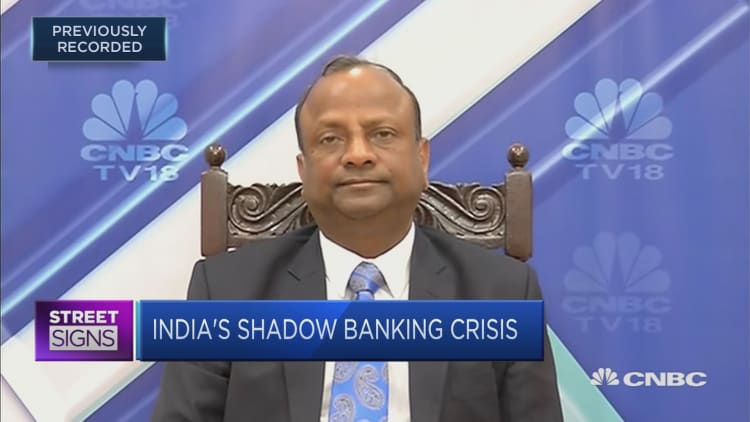
A need to push for growth will likely outweigh inflation considerations for the Reserve Bank of India before its policy decision on Thursday, according to the chairman of the country's largest state lender.
The RBI is due to announce its monetary policy decision on Dec. 5 at 11:45 a.m. local time (2:15 p.m. HK/SIN) and the central bank is widely expected to cut rates for the sixth consecutive time.
"There are two aspects: One is that the inflation numbers have been around 5%," Rajnish Kumar, chairman of the State Bank of India, told CNBC's "Street Signs" on Wednesday.
India's annual retail inflation rose to 4.62% in October on the back of higher food prices, Reuters reported.
"And, the other is, of course, the growth numbers have not been satisfactory and there is a need to push the growth. That will, in my view, outweigh the consideration and in all likelihood, there may be a rate cut tomorrow," Kumar said.
RBI has already slashed its repo rate — or the rate at which it lends to commercial banks — by 135 basis points since January to boost the economy, making it one of the most aggressive central banks at the moment. The current repo rate is 5.15%.
But, those rate cuts have not fully been transmitted back to the economy, which has led many experts to question the effectiveness of the RBI's monetary policy.
Theoretically, when a central bank cuts lending rates to commercial banks, those lenders would pass on the rate cuts to consumers in the form of cheaper loans. But, many lenders in India are struggling with large volumes of non-performing assets weighing on their balance sheets. That makes them hesitant to pass on the full benefits of a lower cost of borrowing to consumers.
In September, the central bank made it mandatory for banks to link certain categories of loans to an external benchmark system to determine interest rates for consumers.
"All the retail loans now, as per the regulatory guidelines, they all have been linked to what we call external benchmark lending rate," Kumar said. "Most of the banks have adopted repo rate as the external benchmark."
That implies if the repo rate is slashed, those banks would have to lower the interest rates they charge consumers for borrowing. Kumar explained that corporate loans are linked to the marginal cost of lending rate, which is the minimum rate of interest banks can charge businesses to lend them money and depends on the cost of deposits. As it is a derived value based on certain calculations, Kumar said there is a possibility that rate may also come down.
"Both retail as well as corporate, we can expect that as a result of tomorrow's announcement, there will be rate cuts by the lenders," he said. India is likely to see a pick up in credit growth in the second half of the fiscal year that ends in March 2020 as loan sanctions and disbursements pick up, according to Kumar.
Overall, the right mix of monetary and fiscal policy as well as addressing sector-specific issues could help to create a sustainable growth environment, he added.


